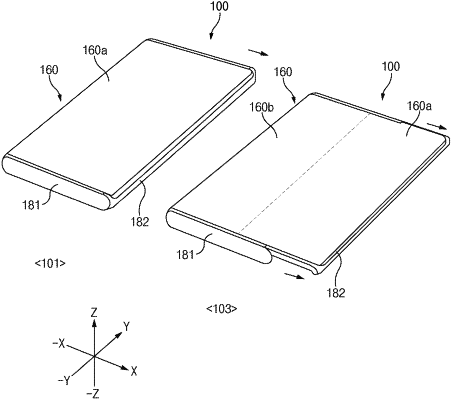| CPC G06F 1/1624 (2013.01) [F16K 31/0675 (2013.01); F16K 31/086 (2013.01)] | 20 Claims |

|
1. An electronic device comprising:
a first housing;
a second housing coupled to the first housing and configured to perform a sliding operation;
a display, of which a size of a visual exposure area is changed in correspondence to the sliding operation of the second housing;
a first variable magnetism member disposed at a first location of the first housing, and of which a magnetic force varies depending on a current or a voltage that is supplied thereto;
a second variable magnetism member disposed at a second location of the first housing, and of which a magnetic force varies depending on a current or a voltage that is supplied thereto;
a magnet member fixed to an inner surface of the second housing, and configured to move between the first variable magnetism member and the second variable magnetism member during the sliding operation; and
a processor operatively connected to the first variable magnetism member and the second variable magnetism member,
wherein the magnet member is disposed adjacent to the first variable magnetism member in a closed state, in which the first housing and the second housing overlap each other by a first extent, and
wherein the processor is configured to:
in response to receiving a user input, control the first variable magnetism member such that the first variable magnetism member has a first magnetic force of a first magnitude,
control the first variable magnetism member such that the first variable magnetism member has a second magnetic force of a second magnitude that is larger than the first magnitude in response to the second housing being moved from a location corresponding to the closed state by a first distance or more such that an overlapping area of the first housing and the second housing becomes smaller, and
set polarity directions of the first magnetic force and the second magnetic force to be opposite to a polarity direction of the magnet member.
|